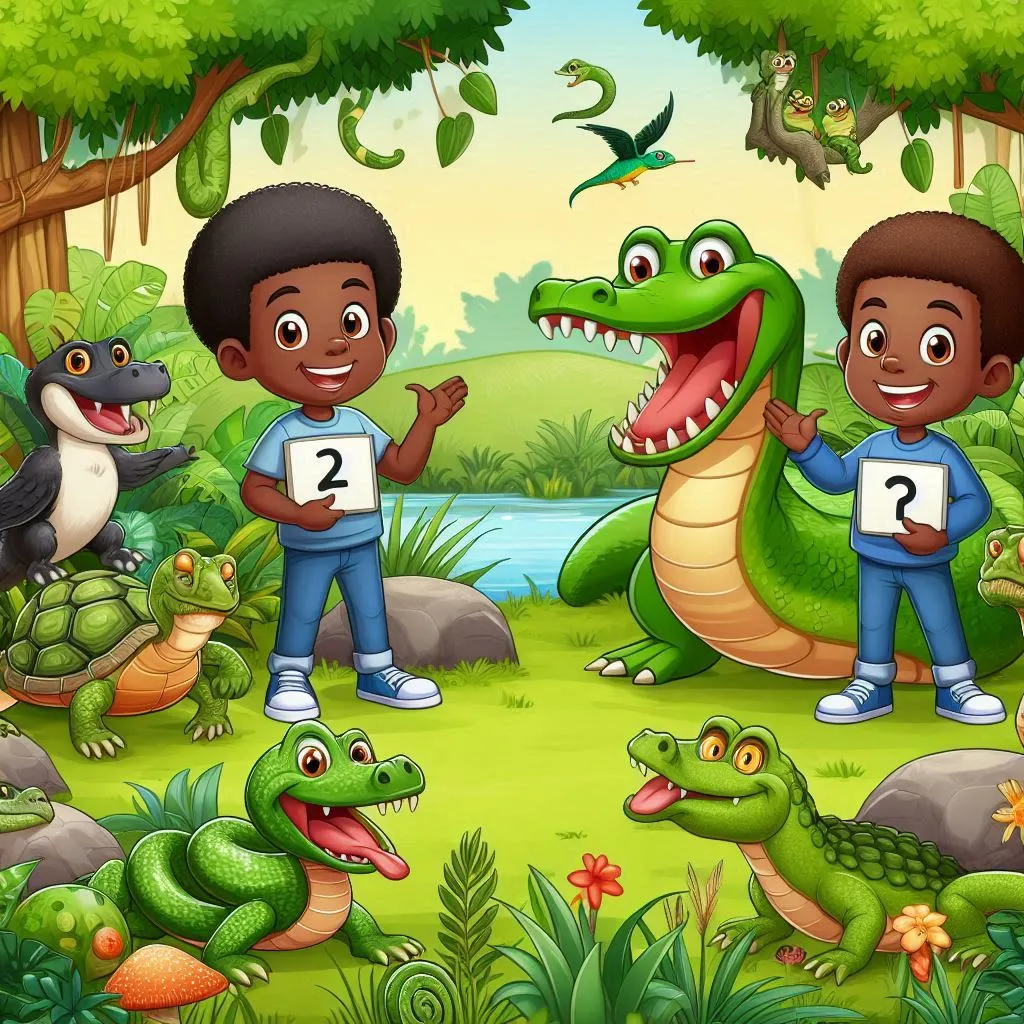Slithering Into Science: Reptiles Flashcards Exploration

Reptiles are some of the most fascinating and diverse creatures on our planet. From the slow-moving tortoise to the lightning-fast lizard, reptiles have captured the imagination of scientists, explorers, and children for centuries. "Slithering Into Science: Reptiles Flashcards Exploration" is designed to introduce learners of all ages to the incredible world of reptiles, making science fun, interactive, and memorable. In this blog, we'll explore what makes reptiles unique, why they are important, and how flashcards can make learning about them an exciting adventure.
What Are Reptiles?
Reptiles are cold-blooded vertebrates that breathe air and usually lay eggs. They have dry, scaly skin and are found on every continent except Antarctica. The main groups of reptiles include:
- Snakes: Legless reptiles known for their slithering movement and diverse habitats.
- Lizards: Reptiles with legs, external ears, and movable eyelids, found in a variety of environments.
- Turtles and Tortoises: Reptiles with hard shells that protect their bodies; turtles live in water, while tortoises live on land.
- Crocodiles and Alligators: Large, powerful reptiles that live in rivers, lakes, and wetlands.
Why Learn About Reptiles?
Learning about reptiles helps children and adults understand biodiversity, adaptation, and the importance of conservation. Reptiles play vital roles in ecosystems as predators and prey, helping to maintain balance in nature. Studying reptiles also:
- Encourages curiosity about the natural world and scientific discovery.
- Teaches respect for all living things, including those that may seem scary or unfamiliar.
- Promotes environmental awareness and the need to protect endangered species.
- Builds observation and critical thinking skills through hands-on learning.
What Are Reptiles Flashcards?
Reptiles flashcards are educational tools that feature images and facts about different reptiles. Each card typically includes the reptile's name, a vivid illustration or photo, and key information such as habitat, diet, and unique adaptations. These flashcards can be used in classrooms, at home, or during visits to zoos and nature centers, making learning interactive and visual.
Key Reptiles Featured in Flashcards
- Snake: There are over 3,000 species of snakes, ranging from tiny threadsnakes to giant pythons and anacondas.
- Lizard: Lizards come in many shapes and sizes, from the tiny gecko to the impressive Komodo dragon.
- Turtle: Turtles are known for their hard shells and can live both in water and on land.
- Crocodile: Crocodiles are ancient reptiles that have changed little since the age of dinosaurs.
- Chameleon: Famous for their color-changing abilities and long, sticky tongues.
- Iguana: Large, mostly herbivorous lizards found in Central and South America.
- Tortoise: Land-dwelling reptiles with dome-shaped shells and long lifespans.
Benefits of Using Reptiles Flashcards
- Visual Learning: Connecting reptile names with images helps learners remember and recognize them easily.
- Scientific Vocabulary: Learning terms like "cold-blooded," "scales," and "habitat" builds science literacy.
- Critical Thinking: Comparing adaptations, diets, and habitats encourages analysis and discussion.
- Environmental Awareness: Understanding the role of reptiles in ecosystems promotes conservation.
- Fun and Engagement: Games and activities with flashcards keep learning lively and interactive.
How to Use Reptiles Flashcards Effectively
- Identification Games: Show a card and ask learners to name the reptile and describe its features.
- Sorting Activities: Group reptiles by habitat (land, water, trees) or by diet (carnivore, herbivore, omnivore).
- Storytelling: Create stories featuring reptiles and their adventures in the wild.
- Role-Playing: Act out how reptiles hunt, hide, or move in their environments.
- Matching Games: Match reptiles to their habitats, foods, or unique adaptations.
- Field Trips: Visit zoos, aquariums, or nature reserves and use flashcards to identify reptiles.
- Art Projects: Draw or color pictures of reptiles inspired by the flashcards.
Fun Facts About Reptiles
- Some snakes can swallow prey much larger than their heads by unhinging their jaws.
- Chameleons can move their eyes independently and see in two directions at once.
- Sea turtles can travel thousands of miles across oceans to lay their eggs.
- Crocodiles have the strongest bite of any animal in the world.
- Komodo dragons can grow up to 10 feet long and have a venomous bite.
- Some lizards can detach their tails to escape predators and regrow them later.
- Tortoises can live for over 100 years, making them some of the longest-lived animals on Earth.
Reptiles Flashcards for Different Ages
For young children, focus on simple names, colors, and basic facts. For older learners, introduce more detailed information about anatomy, behavior, and conservation status. Flashcards can also be used for language learning, science lessons, and even creative writing or art projects.
Why Choose Reptiles Flashcards?
Reptiles flashcards are more than just a learning tool—they are a gateway to understanding the diversity of life, the wonders of adaptation, and the importance of protecting our planet's wildlife. They encourage curiosity, respect for all creatures, and practical knowledge that can last a lifetime. Whether you are a parent, teacher, or young learner, these flashcards make the journey into the world of reptiles both educational and fun.
Conclusion
Exploring the world of reptiles through flashcards is an adventure filled with discovery, excitement, and learning. From the silent glide of a snake to the armored shell of a tortoise, each reptile has a story to tell and a lesson to teach. With engaging visuals, interactive activities, and fascinating facts, "Slithering Into Science: Reptiles Flashcards Exploration" brings the world of reptiles to life and inspires a lifelong love for science and nature.